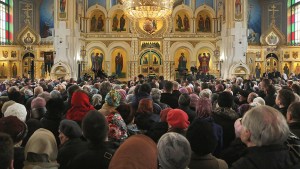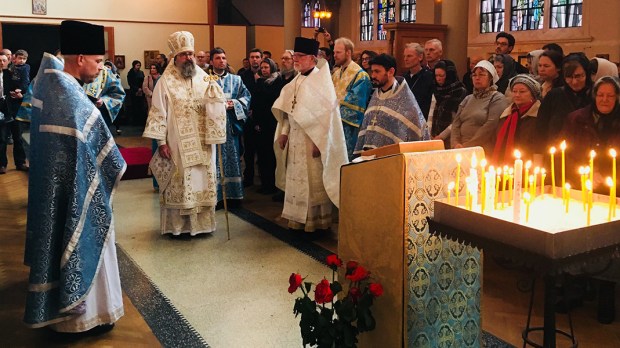While Roman Catholics being Lent with Ash Wednesday and the call to repentance, Eastern Christians (both Orthodox and Byzantine Catholics) celebrate “Forgiveness Sunday.”
The celebration occurs on the last Sunday before the Lenten fast officially begins. In the morning the Divine Liturgy highlights the following words of Jesus.
If you forgive others their transgressions, your heavenly Father will forgive you. But if you do not forgive others, neither will your Father forgive your transgressions.(Matthew 6:14-15)
This sets the tone for the day, which is focused on an interior renewal and a recognition that we must be reconciled with all those we have hurt before we make our own sacrifices to God.
In the evening, Eastern Christians often celebrate “Forgiveness Vespers,” which continues the theme of forgiveness, but also includes a concrete act offered to those present.
Byzantine pastor Father Michael O’Loughlin explains the spiritual symbolism in an interview on Denver Catholic.
“Sin objectively keeps you from a relationship with Christ,” he said. “We need to make sure there is nothing amongst each other that is getting in the way.”In discussing the immensity of his role as pastor of souls, Father O’Loughlin turned to his flock and said, “I ask for forgiveness for any way, and real tangible ways, that I’ve hurt any of you.”
The Catholic Telegraph gives a brief summary of what happens during the liturgical ceremony, “During Forgiveness Vespers, the clergy and the congregation ask forgiveness of each other, one person at a time, for offenses they committed, knowingly or not, and exchange a kiss of peace.”
The action of asking forgiveness vary by local custom, as the Denver Catholic explains, “The choir sang Easter hymns—because forgiveness is an act of Easter—as families, couples and friends lined up to hug Father O’Loughlin. Then forming a line after him, each parishioner received each other and, with smiles and tears, sought reconciliation.”
This could also include a full prostration on the ground, as Angela Doll Carlson describes on her blog, Nearly Orthodox, “We stand in two lines, all of the faithful, facing each other. And at the appointed time we bow to our fellow parishioner, moving into a deep metania or full prostration depending on one’s physical abilities.”
It is a profound tradition, one that emphasizes the need to extend mercy to others before we can fully experience the mercy of God.

Read more:
Why do Eastern Catholics stand during Mass?

Read more:
Why do Eastern Christians make the Sign of the Cross “backwards”?

